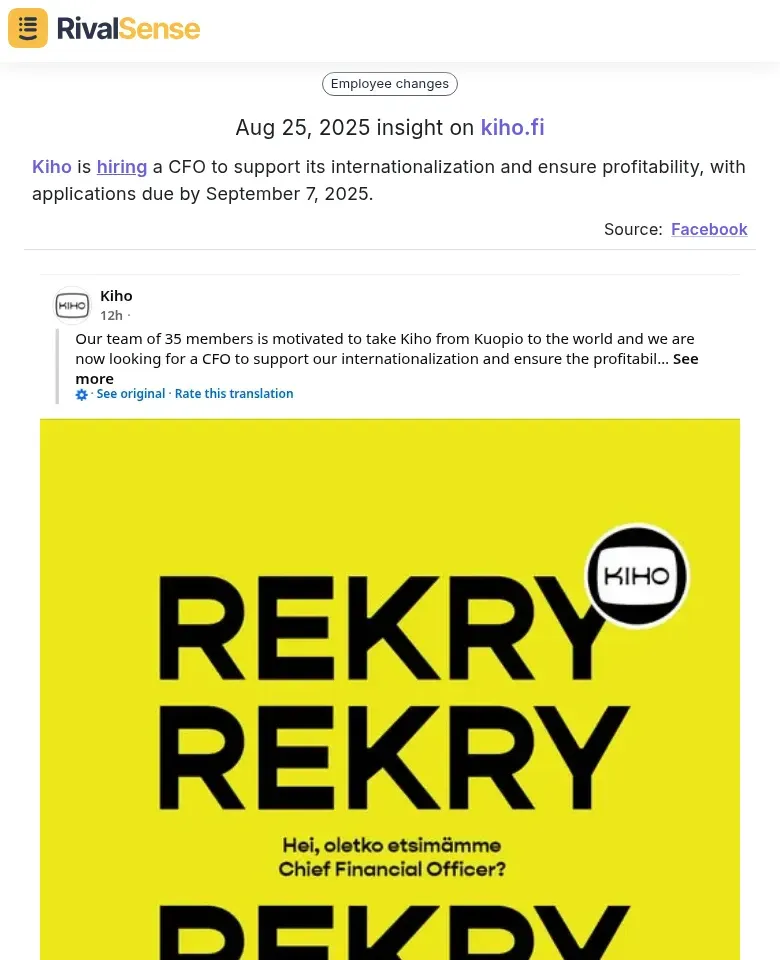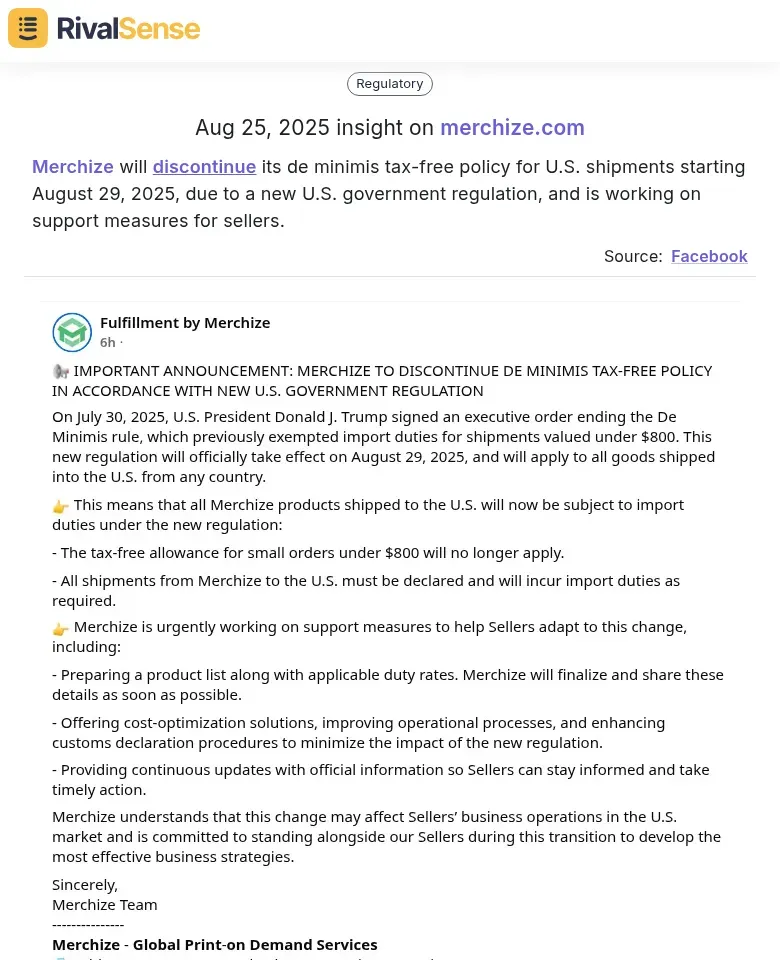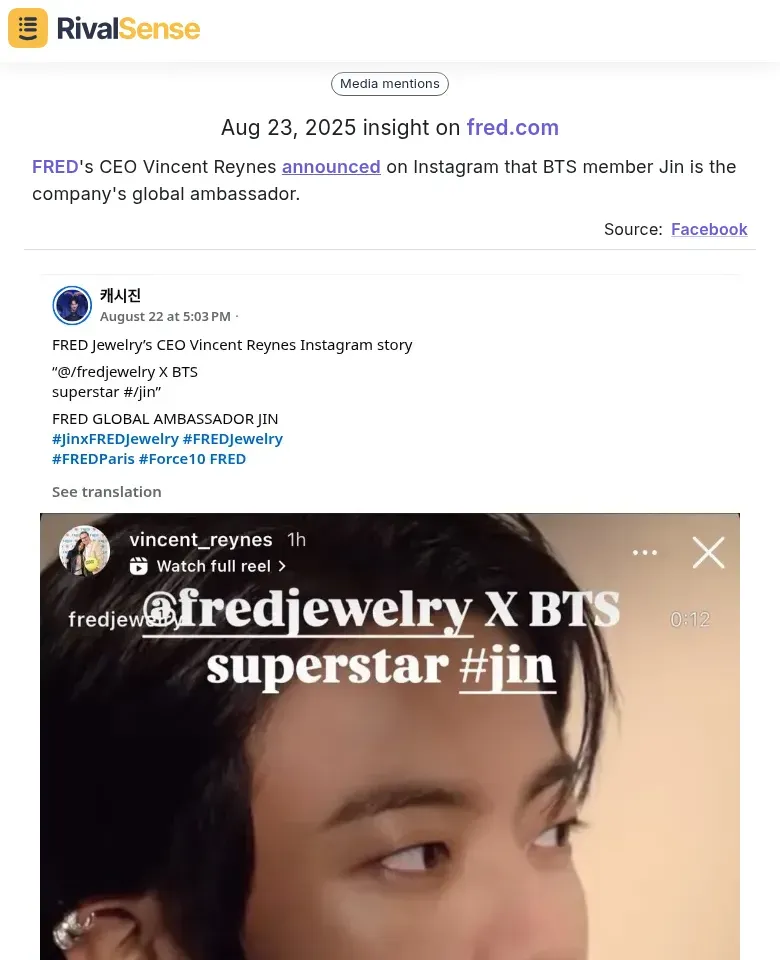5 Facebook Competitor Insight Mistakes to Avoid for Sustainable Partnerships
In today's hyper-competitive digital landscape, Facebook competitor insights have evolved from nice-to-have metrics to mission-critical intelligence for building sustainable partnerships. Real-time social intelligence transforms traditional competitive analysis by providing immediate visibility into competitors' engagement patterns, content strategies, and audience sentiment—data that was previously inaccessible or delayed. Monitoring competitors' Facebook activities reveals partnership opportunities through shared audience interests, complementary content strategies, and emerging market trends that traditional analysis might miss. However, common pitfalls can undermine this intelligence: relying on outdated data, focusing only on vanity metrics, ignoring sentiment analysis, and failing to track competitor responses to market changes.
Practical tip: Set up real-time alerts for competitor mentions, partnership announcements, and industry hashtags using tools like RivalSense to capture actionable insights within hours, not weeks.
🚫 Mistake #1: Overlooking Hiring Patterns as Strategic Expansion Signals
Executive hiring announcements are powerful strategic signals that most companies overlook when analyzing competitors on Facebook. When a competitor posts about hiring key leadership roles, they're revealing expansion plans months before official market entry. These announcements often include profitability goals through role descriptions emphasizing revenue growth or market penetration targets.
Example: RivalSense recently tracked how Kiho is hiring a CFO to support its internationalization and ensure profitability, with applications due by September 7, 2025. This type of insight reveals expansion timing and financial strategy months before public announcements.

Practical steps to decode hiring patterns:
- Monitor competitors' Facebook career pages and executive announcement posts weekly
- Track geographic focus in job descriptions to anticipate market entry timing
- Analyze department hiring surges (e.g., 10+ sales roles = market expansion within 3-6 months)
- Benchmark your hiring velocity against competitors' growth indicators
✅ Checklist for partnership positioning:
- [ ] Document competitor executive hires with international experience
- [ ] Map hiring spikes to potential market entry quarters
- [ ] Calculate resource allocation based on role volumes and seniority levels
- [ ] Compare your expansion timeline against competitor signals
- [ ] Use hiring pattern intelligence to time partnership outreach 30-60 days before competitor market entry
🚫 Mistake #2: Ignoring Regulatory Compliance and Tax Policy Changes
Ignoring regulatory compliance and tax policy changes is a critical mistake that reveals much about a competitor's operational resilience and partnership reliability. Recent cases demonstrate how compliance failures can cripple financial stability and damage partner trust.
Example: RivalSense detected that Merchize will discontinue its de minimis tax-free policy for U.S. shipments starting August 29, 2025, due to a new U.S. government regulation. Tracking such regulatory adaptations helps assess a competitor's operational agility and partnership reliability.

Monitoring policy adaptation serves as a key measure of operational resilience. Competitors who proactively adapt to regulations show stronger risk management capabilities. Use this intelligence to assess partnership risk by:
- Creating a compliance monitoring checklist: Track policy updates and enforcement actions weekly
- Setting up automated alerts for regulatory keyword changes across competitor websites
- Analyzing response timelines—companies taking >90 days to adapt show higher risk
- Comparing cross-border compliance strategies to gauge global operational maturity
Practical tip: Implement automated tracking across multiple sources to receive weekly compliance intelligence reports, helping you benchmark competitors and identify reliable partners based on their regulatory agility.
🚫 Mistake #3: Underestimating Celebrity and Influencer Partnership Value
Underestimating celebrity and influencer partnerships is a critical mistake that blinds you to valuable competitive intelligence. These collaborations reveal your competitors' brand positioning, target audience expansion strategies, and cultural relevance signals.
Example: RivalSense tracked how FRED's CEO Vincent Reynes announced on Instagram that BTS member Jin is the company's global ambassador. Such celebrity partnerships signal premium market positioning and mass market reach strategies.

Analyze ambassador partnerships as strategic indicators. When competitors sign A-list celebrities, they're signaling premium market positioning. Micro-influencer networks indicate niche targeting and authentic community building.
✅ Checklist for partnership intelligence:
- [ ] Map competitor influencer portfolios by tier and category
- [ ] Track partnership announcement timing relative to product launches
- [ ] Analyze engagement rates across different influencer types
- [ ] Monitor audience sentiment shifts post-collaboration
- [ ] Identify underserved influencer categories in your niche
Key insight: 63.8% of brands plan influencer partnerships in 2025, with live streaming emerging as the dominant format (52.4% adoption). Nano-influencers deliver 1.73% average engagement rates vs 0.68% for mega-influencers, revealing the strategic balance between reach and authenticity.
🚫 Mistake #4: Failing to Connect Social Insights to Financial Decision-Making
Failing to connect Facebook insights to financial decisions is like having a treasure map without knowing where to dig. When you track competitors' Facebook activity but don't translate it into budget strategies, you're missing the financial intelligence goldmine.
Practical Steps to Connect Social Data to Financial Decisions:
-
Calculate Competitor Ad Spend ROI: Use Facebook Ad Library to estimate their monthly ad investment and benchmark your partnership budget
-
Correlate Engagement with Financial Outcomes: Track when competitors' engagement spikes and note subsequent financial announcements
-
Create a Decision Matrix:
- When competitor ad frequency increases 25% → Increase your partnership investment by 15-20%
- When engagement rates drop below industry average → Reallocate 10% of budget to testing new partners
- When new product launches get 50%+ engagement → Invest 25% of R&D budget in competitive analysis
-
Weekly Financial Dashboard: Monitor competitor cost-per-click vs. your metrics and adjust your partnership acquisition costs accordingly
✅ Checklist for Data-Driven Partnership Budgeting:
- [ ] Calculate competitor ROAS from Facebook ad performance
- [ ] Track engagement-to-conversion correlation timelines
- [ ] Set budget adjustment triggers based on competitor patterns
- [ ] Monthly competitive financial benchmarking
- [ ] Quarterly ROI recalibration based on social insights
Remember: Facebook metrics are leading indicators. A competitor's 40% engagement increase today often signals their 25% revenue growth next quarter.
🚫 Mistake #5: Neglecting Real-Time Monitoring and Automated Alerts
Many businesses make the critical error of manually checking competitors' Facebook pages, resulting in delayed insights and missed opportunities. In today's fast-paced digital environment, real-time monitoring is no longer optional—it's essential for staying competitive.
Practical tip: Implement automated tracking systems that monitor:
- Competitor content changes and posting frequency
- Engagement spikes and audience sentiment shifts
- Partnership announcements and collaboration reveals
- Regulatory updates and policy changes
✅ Real-Time Monitoring Checklist:
- [ ] Set up alerts for competitor mention spikes (+50% within 24 hours)
- [ ] Monitor partnership announcement timing patterns
- [ ] Track regulatory compliance update frequency
- [ ] Analyze response times to market changes
- [ ] Benchmark your reaction speed against competitors
Conclusion: Building a Sustainable Partnership Intelligence Framework
Building a sustainable partnership intelligence framework requires moving beyond reactive monitoring to proactive strategy. Implement automated systems for real-time Facebook competitor tracking—set up alerts for competitor content changes, engagement spikes, and partnership announcements.
Create decision matrices that weight factors like audience overlap (30%), content performance (25%), partnership history (20%), and strategic alignment (25%) to objectively evaluate partnership opportunities.
Establish quarterly improvement cycles:
- Review partnership performance metrics
- Analyze competitor partnership successes/failures
- Update decision criteria based on market shifts
- Test new partnership approaches
✅ Final Framework Checklist:
- [ ] Monitor 3-5 key competitors daily
- [ ] Update decision matrices monthly
- [ ] Conduct full framework reviews quarterly
- [ ] Implement automated alert systems
- [ ] Benchmark against industry best practices
This systematic approach transforms social insights into actionable strategies that drive sustainable competitive advantage.
Ready to transform your competitor intelligence? Try RivalSense for free and get your first comprehensive competitor report today. Track product launches, pricing changes, partnerships, regulatory updates, and more—all delivered in a weekly email report that keeps you ahead of the competition.
📚 Read more
👉 Ultimate Audio Conferencing Key Account Review Checklist
👉 How to Turn Competitor Regulatory Insights into Key Account Growth
👉 GF Inbursa Increases Telcel Oro Credit Card Fees: A Competitor Analysis Breakdown
👉 Business Partnership Training Programs: Best Practices & 2025 Implementation Guide
👉 Measure Custom Software Partnership ROI: Key Metrics and Practical Strategies
